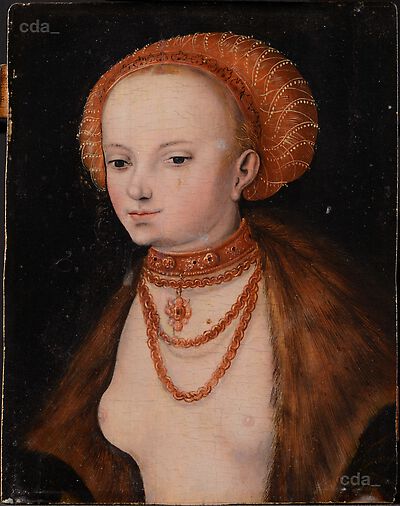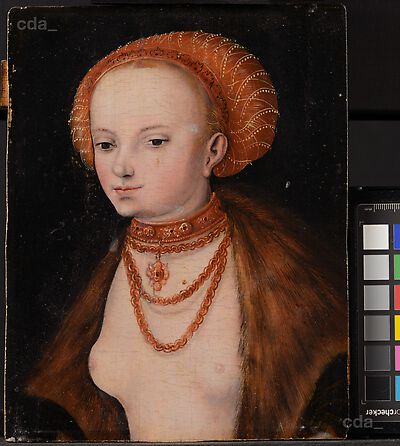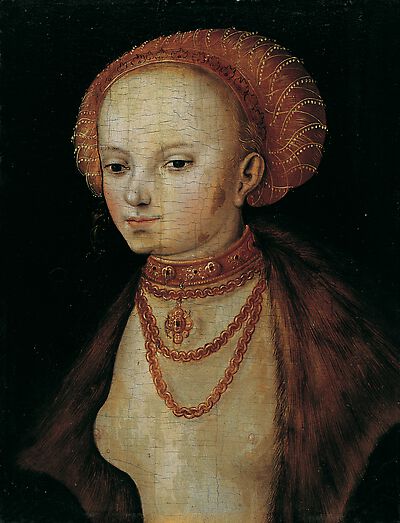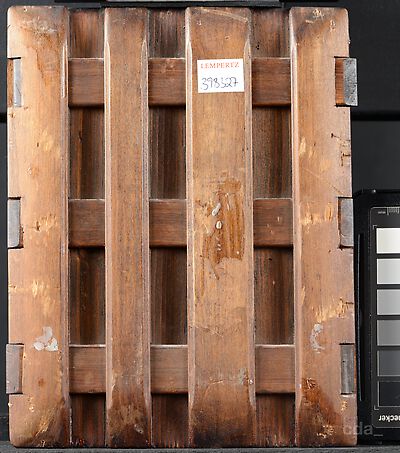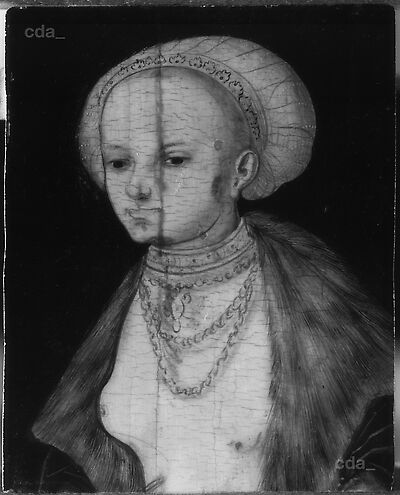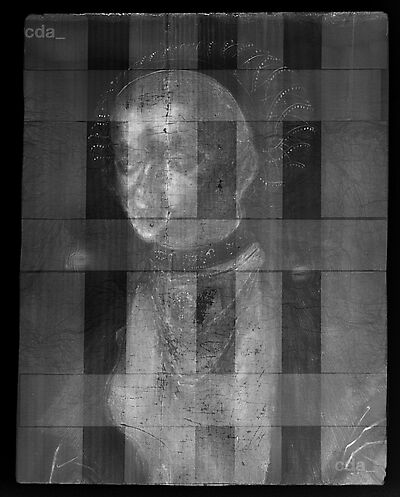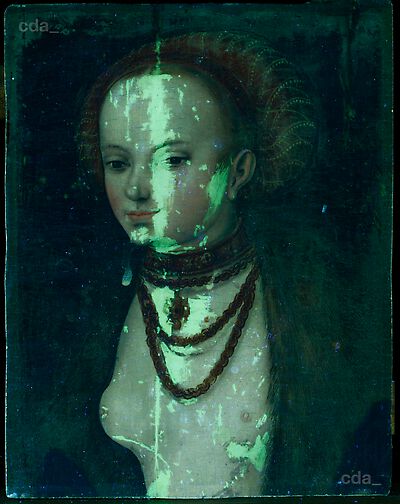Coniferous wood, identified under the stereomicroscope as spruce (A. Krupa).
The panel consist of two vertically aligned boards (with two knots). In the x-radiograph thin dark lines are visible, indicating that a fibrous material was attached, for the most part horizontally, to the front of the panel.
Lucas Cranach frequently chose spruce for his supports during his stay in Vienna from 1502 – 1504, whereas in Wittenberg the use of spruce in the workshop was unusual. Former employees like the Master IW used spruce later in a new place of work. In the Cranach workshop a fibre or fabric application was often attached to panels before they were primed. However, this method however also common in the 16th century workshops of Nuremberg.
The following elements were detected using XRF and on comparision with optical properties the listed pigments could be identified:
Flesh paint: Pb, Hg, (Zn, Cu)
Pb: lead white/ red lead; Hg: vermilion; Fe: iron oxide/ ochre; Cu: blue pigment containing copper (azurite); siccative?; Ca: chalk/ gypsum; Zn: siccative? retouching?
Yellow: Ca, Pb, Fe, Hg, Sn, (Cu)
Pb: lead white/ vermilion; Pb, Sn: lead tin yellow I; Hg: vermilion; Fe: iron oxide/ ochre; Cu: blue/green pigment containing copper? siccative?; Ca: chalk/ gypsum; Zn: siccative? retouching?
Grey/Green: Pb, Hg, Fe, Zn, (Cu)
Pb: lead white/ red lead; Hg: vermilion; Fe: iron oxide/ ochre; Cu: blue/green pigment containing copper? siccative?; Zn: siccative? retouching?
Black: Ca, Pb, Fe, Zn
Pb: lead white/ red lead; Fe: iron oxide/ ochre; Ca: chalk/ gypsum; Zn: siccative? retouching?
Brown: Ca, Pb, Fe, Hg, Cu, (Sn)
Pb: lead white/ vermilion; Pb, Sn: lead tin yellow I; Hg: vermilion; Fe: iron oxide/ ochre; Cu: blue/green pigment containing copper? siccative?; Ca: chalk/ gypsum; Zn: siccative? retouching?
Yellow: Ca, Pb, Fe, Hg, Sn, Cu
Pb: lead white/ red lead; Pb, Sn: lead tin yellow I; Hg: vermilion; Fe: iron oxide/ ochre; Cu: blue/green pigment containing copper? siccative?; Ca: chalk/ gypsum; Zn: siccative? retouching?
The following pigments were identified: lead white, lead tin yellow, vermilion, iron oxide, azurite, a green pigment containing copper and carbon black. In addition a small amount of zinc was detected.
The flesh paint was modelled over a light mid-tone with light admixtures of greyish-brown shadow tones, pink coloured glazes and single dark brown to black contours and accents. The hair was executed using lead tin yellow. The head attire was further refined employing yellowish-red lines and dots as well as a black pattern on a reddish-brown underpaint (iron oxide). The necklaces are executed in a similar confident fashion. The coat appears to have been modelled with a copper-green paint and now discoloured glazes over a dark (black?) underpaint. The single hairs of the fur trimming were painted in brown, black and grey with a fine tipped brush on a light brown underpaint.
The identified inorganic pigments were common in workshops from the middle ages until about 1750 and also in the Cranach workshop. The presence of the element zinc suggests the use of modern zinc white for retouching. However, the use of a 16th century siccative containing zinc is also plausible. It was not possible to identify all the pigments.
[unpublished examination report, Heydenreich, Blumenroth, Dietz, 03.09.2020]
